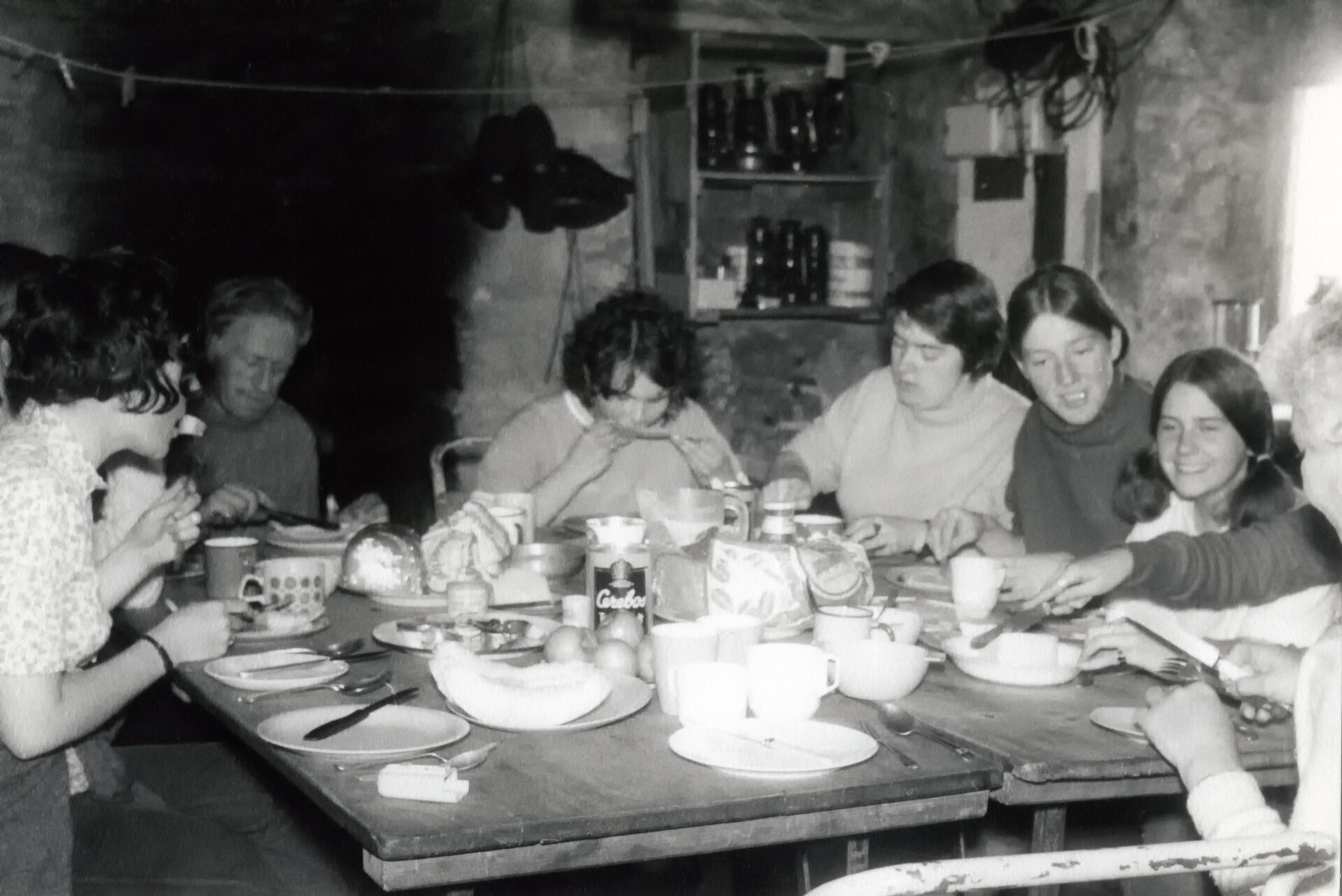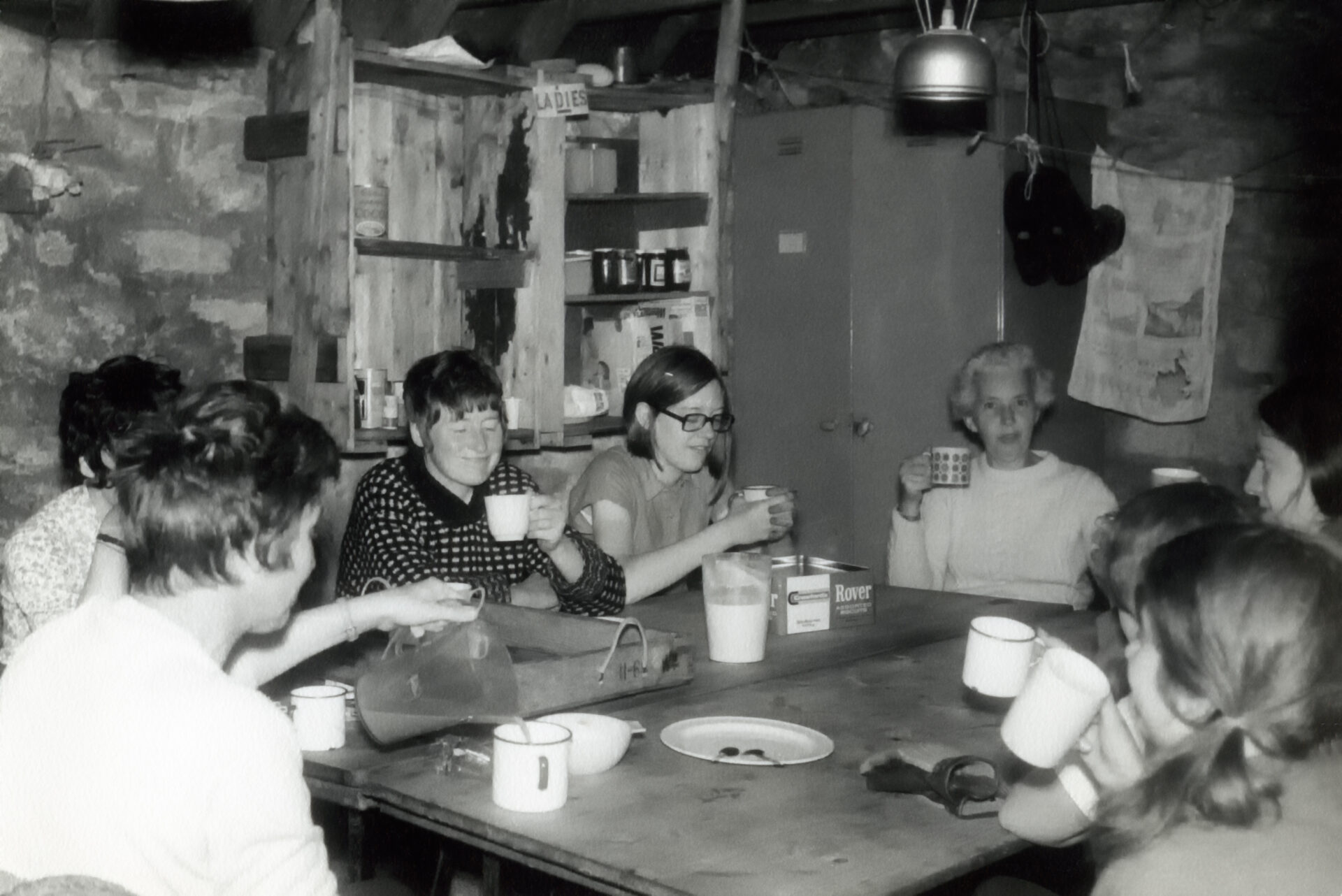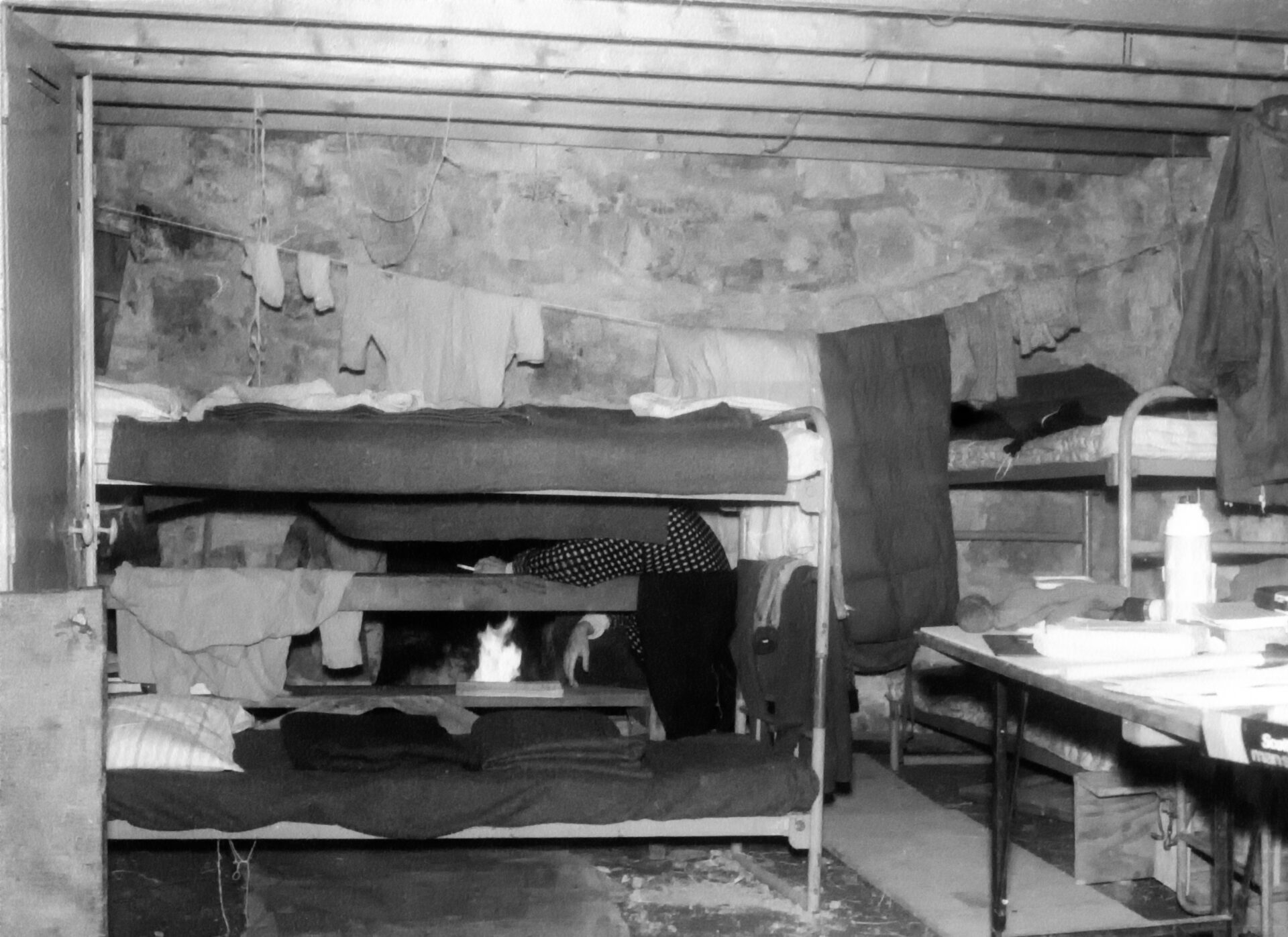A story about St. Kilda
, by HSOG Community
We are grateful to Margot O’Donnell from the class of 1972 for sharing this story about a visit to St. Kilda as a pupil of the Glasgow High School for Girls and a recent trip back to the island 50 years on.
It talks of friendship, a love of the island and some Royal visitors!
This is a story about St. Kilda that you won’t have heard before…
The human connections with the “islands on the edge of the world ” have, for centuries, fascinated everyone who has visited. The incredible history of those who lived there often commands more attention than the shocking sculpture of the islands thrown out by the volcanic activity from 50+ million years ago..
But what follows is a short story of modern history and how the magnetic attraction of St. Kilda has kept friendships alive for 50 years.
Friday 6th August 1971, Anderston, Glasgow – seven 16 to 18 year old schoolgirls and four of their teachers (Helen Jamieson our headmistress, her deputy Katherine Black, geography teacher Evelyn Bell and PE teacher Daphne Ferris) from The Glasgow High School for Girls meet with Jock Nimlin from The National Trust for Scotland. Packed into Miss Bell’s VW van and another vehicle, we headed for Oban to board the Charna, owned and skippered by Bruce Howard.
This was the first all-girl working school party to spend 2 weeks on St. Kilda, which The National Trust had organised – at that time, quite a novelty and the press covered the story to our delight. Helen, Doreen, Margot, Vivien, Jane, Hilary and Margaret had an eventful, unforgettable experience.
In Oban, the loading “chain” soon moved the luggage and supplies from the pier to below decks and the exciting voyage began the following morning, heading out at about 8.30 a.m. in a calm sea and sunshine, passing Mull, Skye and out to meet the Atlantic swell and rougher weather later on. The voyage was a new experience to us girls, with force 5+ winds giving Charna some interesting moments. We anchored in Village Bay around 03.30 a.m. and slept on until we woke with the daylight to see our first close-up sights of this fantastic archipelago.
Army helpers came out to decant us onto their Zodiac – this was becoming a very big adventure. Ashore on Hirta, we explored our accommodation – the 3 habitable “new” houses which were built after a terrible storm in 1860 had destroyed many of the original blackhouses. We organised ourselves – House 1 was the “Gathering/Dining/Mess”, House 2 was for teachers, House 3 was for the girls. The houses had earth floors, army issue bunk beds and no lectric, the kitchen was a lean-to open-plan arrangement and the toilet block was a good walk away over tussocks and low walls – every minute was bringing us some new experience!
Allocated to a few work parties, we got stuck in with the work of digging out and re-roofing some of the cleits – small drystone structures in which the St. Kildans stored and dried birds and eggs, harvested crops, and peat and turf which was used for fuel. We were very lucky to have good weather for our stay – the “St. Kilda summer” had arrived and we could dodge the work for a wee while to get a dip in the sea from the small but lovely sandy beach of Village Bay.
Later on our first evening we had two visitors who joined us for dinner – the RSPB warden, Donald Stewart, and Charlie McLean (a very attractive young man as most of our little band thought) who was busy researching his book “Island on the Edge of the World”. The book was published in 1972 and is an award-winning classic work of social history.
We were able to take advantage of the good weather and alternate the work duties with exploration trips. On a visit to Lover’s Stone, Jock demonstrated the traditional St. Kilda ritual – where the young men of St Kilda, before they could marry, had to balance on their left foot over the edge of the rock, put their right foot in front, and bend down to make a fist over their feet, proving they were able to provide for a family by climbing the rocks to catch birds for food. How impressed the teachers were with Jock’s agility and balance!
The army had extended an invitation to watch a film at their base (“The Bedford Incident” for readers who want the details!) and pupils and teachers found it fun to be entertained by the officers and soldiers of the Royal Artillery. And it was the first of a few gatherings to watch films or meet in the Puff Inn.
The work on the cleits was quite slow and time-consuming but occasionally we unearthed items such as an intact medicine bottle or pieces of pottery which were washed and put on display in the Schoolhouse. Those findings helped to give us a feeling of connection with the St. Kildan people because for young teenagers from Glasgow, their story was from a very different time.
On Thursday 12th August, Margot and Jane, on cooking duty, were told to plan for some extra visitors – and around mid-morning we watched Britannia sail into Village Bay! The story is well told by this piece from Margot’s diary:
“Jane and I were cooks for the day. We all took turns doing this. During breakfast we were told that there would be visitors coming to the island, the Royal Family. Some serious cleaning took place and we were instructed how to act and reply as and when we were spoken to.
Around 11 o’clock Britannia anchored in Village Bay and by 11.30 the party came ashore by launch – no Zodiac for them! We could take photographs but should be discrete and polite about it as this was a private visit and they would probably be quite casual. We lined up on the path and the Duke of Edinburgh immediately came over and chatted to us about the work we were doing for the NTS and also about our school.
They all then had a wander round the main street and looked in the cottages. At that point, a lady in waiting to the Queen asked if a cup of tea could be provided for Her Majesty. It seems she is not a great sailor and Britannia has awful stabilisers… she should have tried Charna!! After her cup of tea, the Queen and the rest of the family headed off to see how to re-turf a cleit and then they went by Land Rover to the top of the island for a picnic.
As the Royal party headed back to the jetty and Britannia, Prince Charles popped his head into the kitchen area and asked what we were cooking. Let’s just say never to invite him for a curry! (Vesta curries were a staple during our trip…) We fed around 17 people that night, not sure who they all were but the meal was enjoyed. The base BSM came up and invited us all for supper at the base the next day.”
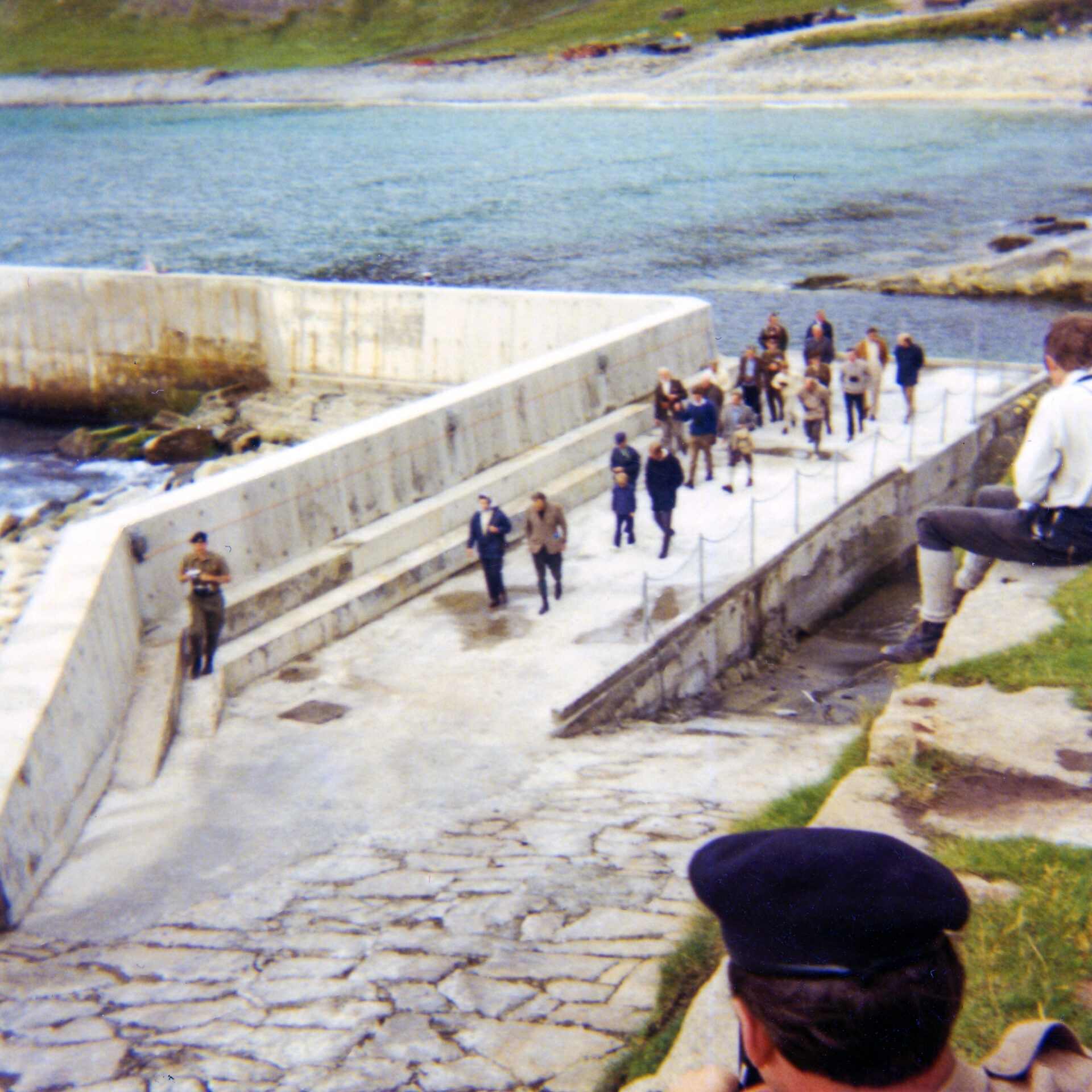
Other adventures included rescuing pufflings who had flown down to the army base, attracted by the lights but then couldn’t get any height from the ground to take off again. So we gathered them up and kept them overnight in cardboard boxes. Next day, first duty was to free them by picking them up gently in both hands and launching them into the air, in the direction of the sea! They are comical little birds and seemed fairly happy about being handled. Not sure about one of Helen’s who got launched back to front though…
Visits were made to the Tunnel with its spectacular foaming seas and playful seals, walks up to the top of Conachair and the highest sheer sea cliffs in Britain – stunning and savage beauty, a trip over to Dun with transport provided by our new best friends from the army.
What an impression that trip has left on 7 schoolgirls. To quote again from Margot –
“In hindsight I doubt I ever thought that trip would have such an impact on me. Nearly 50 years later I still recall so much of it and remember, so fondly, our time on that unique place. I know Helen and Doreen have returned. I have not. I think it is now time to rectify that.”
How very fortunate we were to have had that opportunity of a lifetime. Most of the 7 girls have stayed in touch over the years and 4 of us now plan to travel back in time and, hopefully, 50 years to the day we will again land on St. Kilda and remember how those two weeks changed our views of our friends, our teachers, ourselves. It gave us insights into a past way of living we had never heard of, introduced us to the National Trust, the RSPB, the British Army and the Royal Family! And it revealed to us the most magical stunning beauty of St. Kilda.
August 6th 2021, 50 years to the very day… the local Leverburgh sea eagle, gazing down from the hill on the small island beside the pier, was a treat after a very early start to catch the boat.
Margot describes our feelings very well – we were excited but also apprehensive in case it had changed from the very special place in our memories. Sailing into Village Bay was as wonderful as it could be – we were back in the St. Kilda summer. There have been major changes to the Village during 50 years of course – another 4 of the houses and all the cleitan we could see around the village have now been restored, and the Army buildings demolished and replaced with turf-roofed timber-clad structures. We could still visit the special places – Main Street, the Graveyard and the School and Church (not forgetting the ablutions!), inducing thoughts of how we had changed and how our lives had evolved since those days.
Some brave souls walked up the Gap and ran the Skua gauntlet. Others headed up the road and were lucky to see the resident snowy owl. National Trust warden, Sue, had been snorkelling off the pier and we had a chance to talk with her and swap stories.
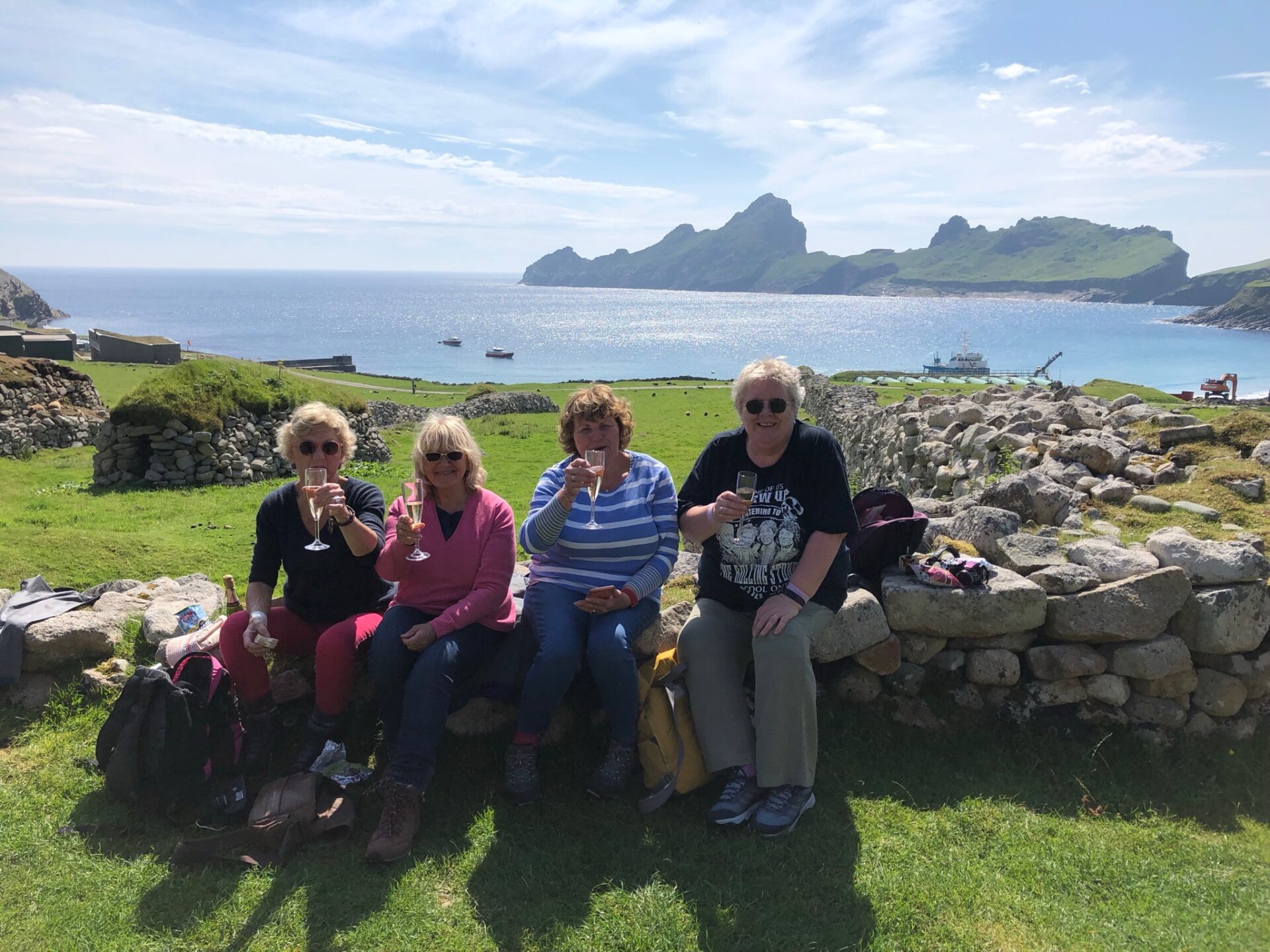
Having had some time for private contemplation, we met up later to toast the islands, our memories, the people we shared our time there with and to our continued friendship. The tender collected us from the pier and we were back on Kilda Cruise boat “Hirta” for essential tea and cake, before a jaw-dropping tour around Boreray, Soay and the Stacs. The sky was full of puffins, gannets, fulmars as we headed home, through water which by now was growing a bit lumpier. A long evening of chat and laughter followed.
We plan to return, though we won’t wait another 50 years. But whatever other changes may come by human hands, the permanent beauty of the islands still dominates over all.

